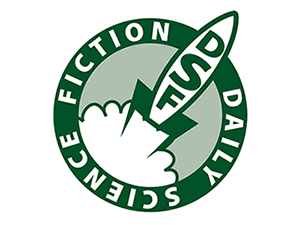
Steel Slats
by James Dorr
Manuel had to stop his truck for the sheer awe of it. He had never been this far north before--he had heard stories about it of course--but now he could see it with his own eyes! A gleaming line on the distant horizon, shimmering in the strong Mexican sunlight. Extending as far as the eye could see, to the left and the right, as he started his vehicle again, continuing north down the dusty highway.
The American Wall!
It became clearer as the hours progressed, resolving into a series of close-set vertical lines, the sheer height of which was itself awe inspiring. He remembered some of the tales he had been told when he was a nino in Guatemala, of how at one time the Wall had been meant to be made of concrete. At that time there had been a great fear in the United States, of drugs and narcotics crossing the border from south to north, and only concrete, it was thought, could stop them.
But then the Americans' leader had second thoughts. Many players of a game called football -- not real football but "American football" -- had lost their jobs for praying on their knees when the U.S. national anthem was played, and now it was feared a number of them would move to Mexico. Men who, as another, lesser leader had put it, had "calves as big as cantaloupes" and would be enlisted to punt the drugs over the wall when it was built, to waiting confederates in places like Texas and Arizona. And so the U.S. Supreme Leader decreed it would have to be built in a way that would let America's federales see "what people were up to on the other side."
That's when the Supreme Leader had a vision: of "beautiful steel slats." Slats which, as several detractors suggested, would allow drugs simply to be passed between them, but the leader had spoken, and that was the Law. In any event, as everyone knew most narcotics were smuggled hidden in cars that passed into the U.S. through legal checkpoints. But that didn't matter.
The Wall would be built, slats and all, with arrow-sharp spikes at the ends of the uprights, and out of steel which had doubled in price since the leader had decreed new tariffs on it. But the leader said also, though no one knew how, that Mexico would pay the cost.
Some said that was one of the causes of the U.S. economic collapse--that Mexico had declined the bill--though there were other reasons as well. The flooding of Louisiana, for instance, as a result of global warming which all but destroyed U.S. sugar production, but to the benefit of sugar growers in suddenly prosperous Guatemala and Nicaragua. This itself was part of the reason Manuel was driving a tank truck of molasses to the U.S.-Mexican border.
And why he was even now pulling up to the base of the Wall, joining the trucks of other workers, Mexicans and Central Americans, braiding bicycle tire inner tubes into long rubber bands. The ends of these were being tied around the Wall's slats as others peered through to see what was up on the U.S. side.
Manuel looked too. He could see what appeared to be dust in the distance, clouds of dust far away at the moment but growing nearer.



